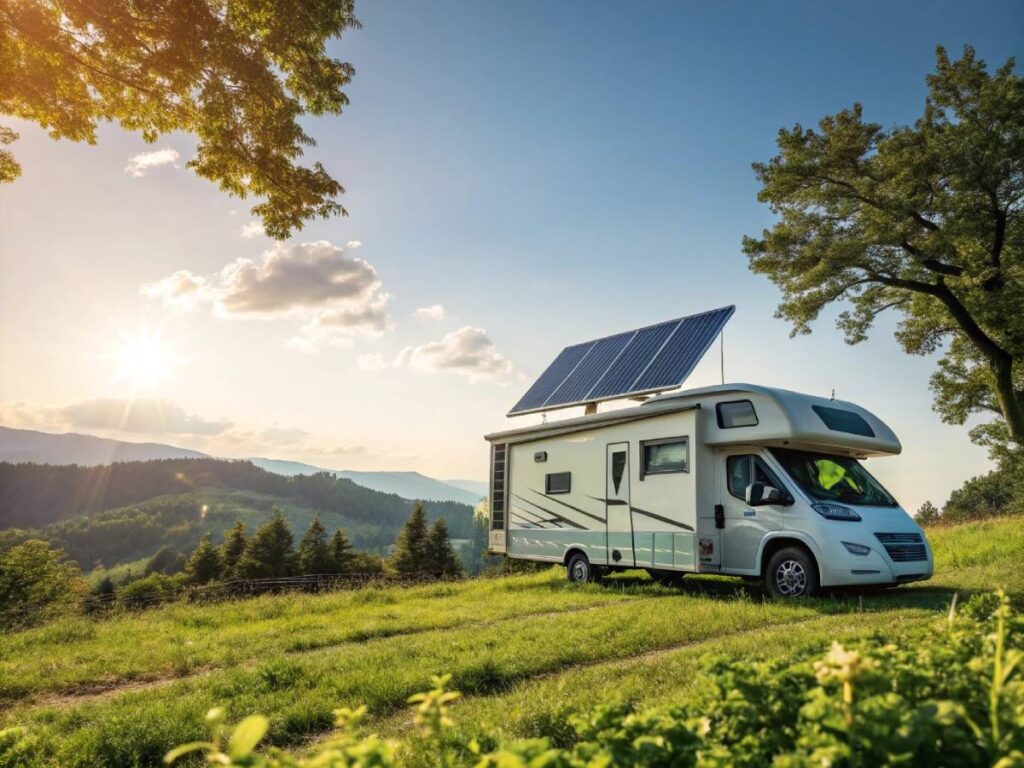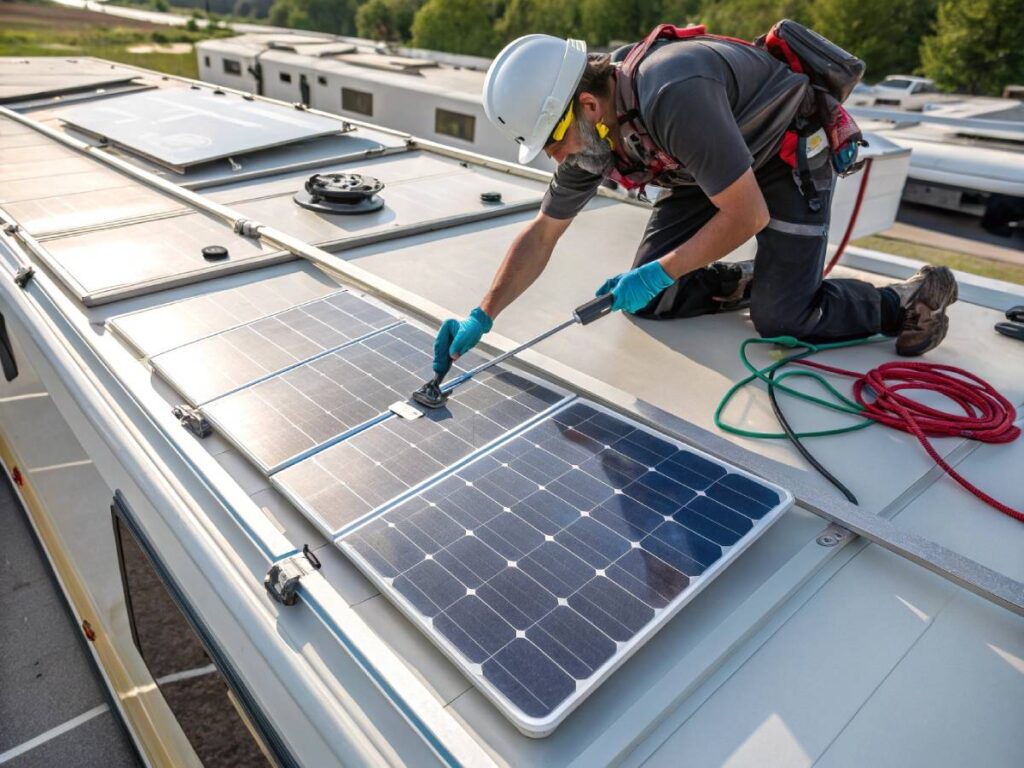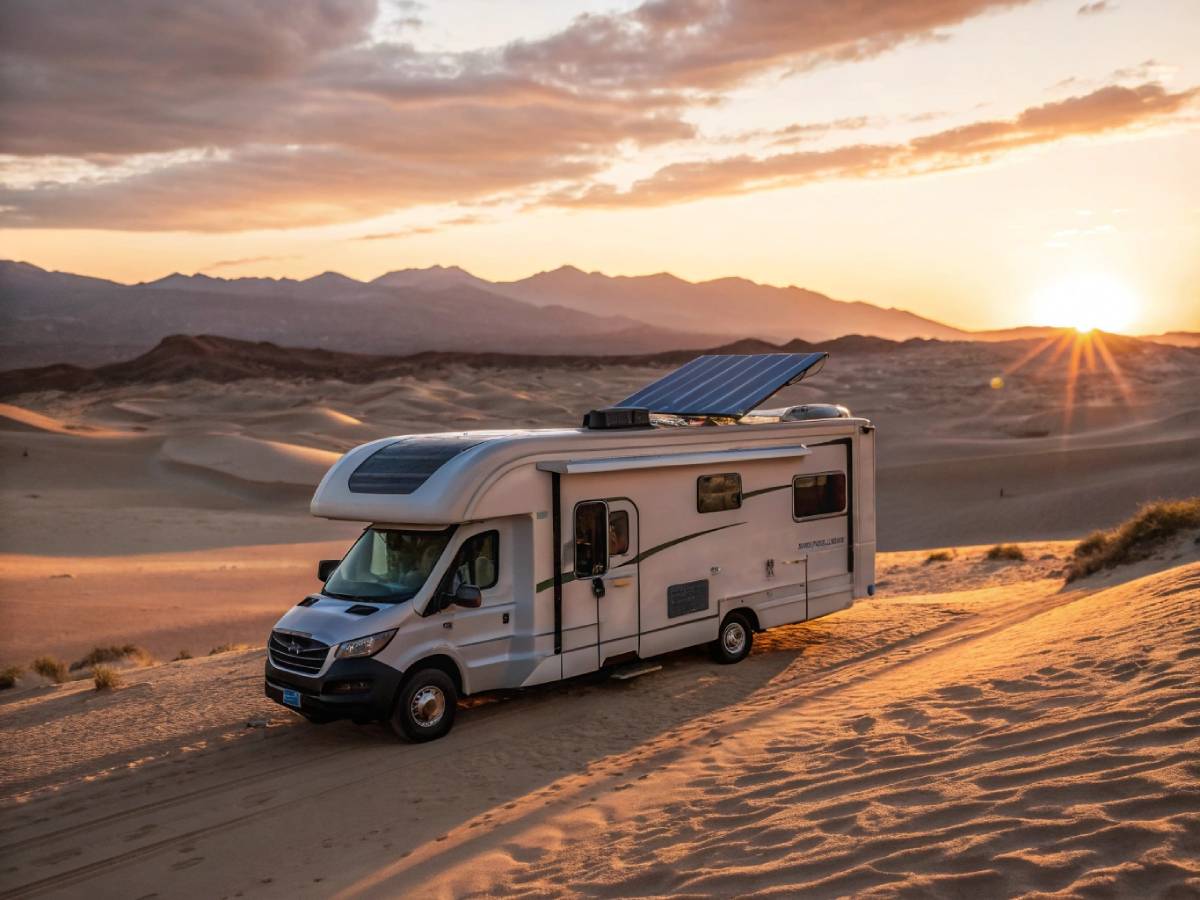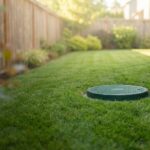Imagine cruising on endless highways where the sun not only lights your way but fuels your adventures.
Solar generators are transforming RV living by harnessing renewable energy, offering a quiet, cost-effective, and eco-friendly alternative to traditional power sources.
Whether you’re an off-grid enthusiast or an eco-conscious traveler, these innovative systems let you explore remote destinations without sacrificing modern comforts.
Dive into our guide to discover how solar generators power your RV, reduce your carbon footprint, and free you from noisy, polluting engines—ushering in a new era of sustainable, independent travel.
Powering Up on the Go: Solar Generators for RV Living
If you’re the eco-friendly type or just someone itching to break free from the grid, solar generators are your ticket to keeping those lights on wherever your wheels take you. Let’s peek into why these solar wonders are a smart choice for wanderers and how they harness the sun’s juice.
Exploring the Benefits of Solar Generators

Solar generators are like having a little piece of the sun tagging along on your adventures. For road warriors and gadget-loving tree huggers, they offer a bundle of perks:
- Green Power: These bad boys soak up sunshine to keep your rig running, giving a thumbs-up to Mother Earth and shunning fossil fuels.
- Peace & Quiet: Ditch the noisy engine clatter—solar means you get the sounds of nature, not machinery.
- Hassle-free Upkeep: With scant moving bits, you’re looking at less tinkering and more Netflix under the stars. Dive into our how-to on solar generator maintenance if you like getting technical.
- Save Some Dough: After the initial spend, sun power chips away at your bills like Pac-Man gobbling up dots.
- Easy Peasy Portability: Lightweight and ready to roll, these solar packs mean your energy goes where you do.
Understanding the Basics of Solar Energy
To see why these solar gizmos work their magic, let’s break it down. It’s basically turning sunshine into watts using some nifty gear. Here’s the lowdown:
- Solar Panels: They catch those sunny rays and spin them into direct current (DC) power.
- Charge Controller: Keeps the juice in check so your battery doesn’t throw a tantrum or blow a fuse.
- Battery Bank: Stores the sun’s energy for those cloudy days, keeping the lights on when the sky’s gloomy.
- Inverter: This gadget flips DC into AC, the kind your toaster and TV crave.
If you’re still scratching your head, our solar generator guide breaks all this down in plain speak.
| Component | What It Does |
|---|---|
| Solar Panels | Turn sunshine into DC power |
| Charge Controller | Keeps voltage steady to avoid battery tantrums |
| Battery Bank | Saves energy for rainy days |
| Inverter | Flips DC to AC power for your gadgets |
Solar generators are the perfect fit for RV owners wanting a break from fossil fuels. With a bit of sun know-how, you can easily pick the perfect solar sidekick for your off-grid escapades. Ready to dive deeper? Check our scoop on the top solar generators for your next road trip.
Factors to Consider for RV Solar Generators
Choosing the right solar generator for your RV can feel like picking out the perfect ice cream flavor—crucial for satisfaction but tough to decide among many tempting choices! Dive into these handy pointers to help make your selection smooth and stress-free.
Power Output and Capacity
Here’s the deal: the juice and the stash. The generator’s power output shows you how much energy it can churn out (watts) while its capacity tells you how much of that energy it can stash away (watt-hours, or Wh). If you aim to keep that fridge humming and your phone buzzing on an adventure, make sure you’ve got enough juice.
Essential checks:
- Daily Energy Use: Add up the wattage of all the gizmos you plan to power.
- Nighttime and Sunless Days: Opt for enough battery storage to keep things running when the sun sets or hides.
| Device | Wattage (W) | Daily Use (hrs) | Total Use (Wh) |
|---|---|---|---|
| LED Lights | 10 | 5 | 50 |
| Mini Fridge | 50 | 24 | 1200 |
| Laptop | 60 | 4 | 240 |
| Phone Charger | 5 | 2 | 10 |
Need extra help? Peek at our solar generator sizing tips.
Weight and Portability
When you’re rolling from one beautiful spot to another, portability is key. Solar generators, much like luggage, come in various weights and sizes. Going light means simpler hauling and setup, but might mean trading off some power.
Things to mull over:
- Weight: Can you lug it around without straining yourself?
- Size: Will it snugly fit wherever you’ve got room?
- Handles and Wheels: These can make a big difference when you’re on the move.
| Solar Generator Type | Weight (lbs) | Portability Perks |
|---|---|---|
| Small Portable | 10-20 | Handy grip, easy lift |
| Medium Portable | 20-50 | Handle and maybe wheels |
| Large Portable | 50+ | Wheels, sturdy handle |
For more options that fit your travel style, check out our guide on portable solar generators for camping.
Charging Options
Consider your charging options like having multiple ways to refill your coffee: cup, pot, or thermos, ensuring you’re never left cold. Most solar generators can power up via solar panels, wall plugs, and car chargers. Having choices means you can stay charged whether you’re basking in the sun or back on the road.
Options to factor in:
- Solar Power: Think about how fast panels can soak up the sun.
- Wall Plugging: Is it ready to juice up from your typical outlet?
- Road Charging: Handy when you’re on a long drive.
| Charging Method | Charge Speed (Watts) | How Long It Takes |
|---|---|---|
| Solar Panels | 100-200 | 6-10 hours |
| AC Outlet | 150-300 | 4-6 hours |
| Car Charger | 80-120 | 10-15 hours |
For more charging know-how, swing by our article on charging solar generators.
Thinking about how much power you need, how easily you can carry it around, and the different ways you can charge it helps you pick the best fit for your RV adventures. For detailed guides and comparisons, hop over to our solar generator roundup.
Types of Solar Generators for RVs
For campers turned eco-warriors, solar generators provide that sweet spot of reliable power without cranking pollution into the beautiful roads less traveled. Peek into the solar generator scene, and match your rolling home with the perfect partner in sun service.
All-in-One Solar Generator Kits
Going for the all-in-one kits is kind of like buying a pre-bundled gift basket, minus the predictable grocery store snacks. They’re stuffed with solar panels, a controller to regulate charge, batteries, and an inverter, making the setup a breeze—even for those of us less technically gifted.
Advantages:
- Easy, peasy plug-and-play
- Everything you need under one hood
- No compatibility migraines
Considerations:
- Wallet-busting at first
- Not much room to put your own spin on it
Got questions bubbling up about these magic kits? Our ultimate solar generator guide is like your friendly neighborhood geek – in written form.
Portable Solar Power Stations
Picture this: a power station compact enough to throw in your RV without turning it into a Tetris game. Lightweight and packed with a smorgasbord of ports, these bad boys are made for more than just sitting around—they’re perfect for your life on wheels, weekend campouts, or when Mother Nature decides to give you an unplanned blackout.
Advantages:
- Bag-it-and-go portability
- Brainy and user-friendly
- Mix-and-match charging ports
Considerations:
- Juice runs out on longer trips
- Might need a panel boost for serious power
Curious how these stack up against their nosy neighbors—the traditional generators? Check out our head-to-head article on solar generators vs traditional generators.
DIY Solar Generator Setups
So, you fancy yourself a fixer-upper kind of RV wanderer? A DIY solar setup feels like building a Lego masterpiece, but with real-world benefits. Swap, mix, and match your solar bits—from panels to inverters—just the way you like ‘em.
Advantages:
- Tailor-made to fit your whims
- Can save you a few bucks
- Tinkerer’s paradise of learning
Considerations:
- Know-how is your ticket
- Could eat through your weekend plans
- Playing mix-and-match with tech: proceed with caution
Get knee-deep in DIY and unleash your inner solar engineer with our diy solar generator kits guide.
| Type | Pros | Cons |
|---|---|---|
| All-in-One Kits | Simple to set up, Fully packaged | Pricey, Less custom fun |
| Portable Power | Light, Versatile ports | Doesn’t last forever, Maybe more panels needed |
| DIY | Custom fits, Budget-friendly | Skilled hands needed, Time drain |
The solar options are as wide as the open road. Let your decision be powered by knowledge, whether it’s an out-of-the-box kit, a handy portable station, or getting crafty with a DIY rig. Solar generators are shining stars in making RV life green and freewheeling. For an extra spark of tips, pop by our how solar generators work section.
Installation and Maintenance Tips

So, you’ve got yourself a solar generator for your RV—nice move! Now, let’s keep that baby running smooth and steady. Let’s dive into getting set up and keeping it in tip-top shape.
Proper Placement of Solar Panels
Location, location, location—it’s not just for real estate. Where you stick those panels makes all the difference. Here’s what you should be eyeballing:
- Angle: Tilt them panels like you mean it, catching the sun at just the right angle to suck in all that sweet juice.
- Orientation: In the U.S. of A., face those panels south. Trust us, the sun’s your friend.
- Shade Avoidance: Don’t let trees or your RV cast a shadow over them—shade isn’t cool here.
| Placement Factor | Ideal Condition |
|---|---|
| Angle | 30-45 degrees |
| Orientation | Facing south |
| Shade | Full sunlight, no obstructions |
More into the details? Check out our solar generator playbook for the full scoop.
Regular Maintenance and Cleaning
Take a little time to keep things neat and tidy, and your solar generator will thank you with reliable power. Simple as that:
- Clean Panels: Dust off the muck and grime with a gentle cloth and soapy water. Your panels love bath time!
- Inspect Connections: Hunt for any frayed wires or loose bits. A quick once-over can save you headaches later.
- Monitor Battery Health: Peek at those battery levels. A healthy battery is a happy battery.
Got more questions? Head on over to our care guide for the full lowdown.
Troubleshooting Common Issues
No worries, even with the best care, hiccups happen. Here’s your quick-fix list:
- Low Power Output: Have a look-see for any shade, give panels a clean, and check all those wires.
- Battery Not Charging: Tighten up all connections, tidy up your panels, and make sure your battery isn’t crying out for help.
- Overheating: Let your unit breathe; make sure it’s not roasting in direct sun.
If you hit a snag, check out our troubleshooting how-to guide.
With a little love and these handy tips, your solar generator will keep the lights on while you enjoy the rolling road of eco-friendly travel. Keep on trucking and keep that generator humming!
Maximizing Efficiency and Utility
If you’re cruising the open road with a solar generator in your RV, let’s make sure that energy works harder than your Uncle Bob trying to fix a flat tire without his glasses. We’ve got energy-saving tricks, cool ways to power your gadgets, and tips for making solar generators and RV systems work like a dream team.
Energy Conservation Tips
Keeping tabs on energy usage isn’t just responsible—it keeps your generator jazzed up and ready for action. Here’s how you can stretch those sunny volts further:
- LED Lighting: Swap old bulbs for those snazzy LEDs. They’re like the energy-sipping cousins of regular bulbs.
- Energy-Efficient Appliances: Grab appliances that drink less juice.
- Power Strips: Use smart power strips to cut down on sneaky power munchers.
- Timely Charging: Catch those rays and charge devices when the sun’s smiling brightest.
- Temperature Settings: Nudge that thermostat to sip rather than chug energy.
Let’s compare how much oomph appliances typically demand:
| Appliance | Average Power Use (Watts) | Handy Tips |
|---|---|---|
| LED Light Bulb | 10 | Flip the switch only when you need it. |
| Refrigerator | 50 – 100 | Keep that door shut and full to the brim! |
| Laptop | 50 | Shut it down when it’s not crunch time. |
| Microwave | 600 – 1200 | Do the stovetop dance instead, when possible. |
| Fan | 20 – 50 | Bust it out during the day to keep cool. |
Using Solar Power for Different Appliances
Solar generators are like tiny powerhouses with the right touch. Just know what each gadget thirsts for, and keep your energy in check.
Low-Consumption Devices
- Smartphones and Tablets: Solar energy loves these. Charge them up all day long.
- LED Lighting: Brighten your space with barely a sign on the electric bill.
Medium-Consumption Devices
- Laptops: Keep them going as long as you don’t overdo it.
- Small Kitchen Appliances: Toast and blend when the sun’s high in the sky.
High-Consumption Devices
- Refrigerators: These are hungry, so play mother hen and monitor closely.
- Air Conditioners: They guzzle power. Use sparingly or find a cool breeze.
Curious for more tips? Check out our handy solar generator usage guide.
Integrating Solar Generators with RV Systems
Getting your solar generator to chat with your RV’s circuits can up your off-grid game. Here’s how to blend these bad boys together:
- Inverter Consideration: Match the inverter’s muscle with what your RV needs.
- Battery Storage: Align battery capacity with your snacking habits—uh, energy usage. Our battery comparison guide spills the beans.
- Proper Wiring: Use tough, quality wires to link panels to generators and batteries.
- Energy Monitoring: Employ monitoring gadgets to adjust your usage on the fly.
Hit these links to keep your generator and RV working in harmony. For more tips, peek at our solar generator maintenance article.
Stick to these pointers, and you’ll have those solar panels working like an enthusiastic barista. Cheers to eco-friendly adventures!
Off-Grid Living with Solar Power
Sustainable Living Benefits
Going off the grid with solar power is like savoring the sweet freedom of self-reliance. It lets folks shake off their reliance on the usual electricity sources and dip their toes into living green. Solar generators for RVs offer just the ticket; they dish out renewable energy to keep gadgets humming along, all while sidestepping fossil fuels and shrinking your carbon footprint. It’s a win-win for those who fancy themselves as eco-heroes and off-grid nomads.
Relying on solar gadgets in RVs means more independence and less need for plugging into outside power. That way, you can mosey on over to the boondocks without worrying about running out of juice. If you’re itching to know more about the magic of solar power, don’t miss our breakdown on how solar generators work.
Cost Savings and ROI
Sinking your bucks into solar generators for your RV might feel like a splurge at first, but boy, does it pay off eventually! Even though the initial splash for solar panels and gear can hit the wallet, running costs hardly make a dent. Since sunlight doesn’t send a bill, you can bid farewell to those pesky fuel prices tied to regular generators.
| What’s the Damage? | Regular Generators | Solar Generators |
|---|---|---|
| Starting Price | $ | $$ |
| Fuel Fees | $$ | $ |
| Upkeep Fees | $ | $ |
| Total Cost Over Time | $$ | $ |
As time ambles on, the savings from slashing fuel charges and maintenance costs make the return on investment (ROI) crystal clear. Plus, living in sunny areas might net you some sweet perks and rebates for hopping on the solar bandwagon, flipping more cash back into your pocket. Need help figuring out what size solar setup fits your needs? Our solar generator sizing guide is here to help.
Environmental Impact of Solar Energy
Solar power is like nature’s clean and efficient energy gift wrapped in sunshine. Using solar generators for RVs can chop down the greenhouse gas guzzlers and earthly nasties like nobody’s business. It’s like a one-way ticket to lowering your eco-impact and giving our planet a little breathing room.
| Impact | Regular Generators | Solar Generators |
|---|---|---|
| Greenhouse Gases | Loads | Minimal |
| Air Pollution | Meh | Zip |
| Racket Level | Noisy | Quiet as a mouse |
| Uses Renewable Juice | Nope | You bet! |
A quiet solar setup means no more roaring engines, leaving you with a blissful hush to savor the sounds of nature. Wanna get on the solar train? Check out our handy guide on off-grid solar generators.
Jumping on the solar power bandwagon for off-grid living can be good for your wallet and Mother Nature. Looking to explore more about solar? Get stuck into our ultimate solar generator guide.
Conclusion
In summary, solar generators are redefining the RV lifestyle by marrying eco-conscious technology with modern convenience. This guide has explored the many facets of solar power—from the inherent benefits of renewable energy and the diverse types of solar generator setups to critical factors like power output, portability, and charging options.
We’ve detailed how proper installation, regular maintenance, and energy conservation tips can maximize efficiency, ensuring that your journey off the grid remains smooth and sustainable.
Whether you’re a seasoned road warrior or just embarking on your first RV adventure, integrating solar power into your travel plans not only reduces your environmental impact but also lowers long-term energy costs. Embrace this innovative approach to mobile living and enjoy the quiet hum of renewable energy, knowing that every mile you travel is powered by the boundless energy of the sun.
Final Thoughts
Embracing solar generators is more than just an energy upgrade—it’s a lifestyle transformation for RV enthusiasts seeking freedom and sustainability. The shift from traditional generators to solar-powered solutions empowers you to explore remote locations while minimizing your ecological footprint.
With benefits like reduced noise, lower maintenance, and significant long-term savings, solar power offers both practical and environmental advantages. The detailed breakdown of installation, maintenance, and energy conservation tips in this article provides a solid foundation for making informed decisions.
By choosing the right solar setup, you invest in a future where your travel adventures are powered by clean, renewable energy, ensuring a harmonious balance between modern comfort and nature’s bounty.
Main Tips Around the Article
- Always measure your daily energy consumption before selecting a solar generator.
- Prioritize lightweight and portable designs for ease of movement.
- Regularly clean your solar panels to maintain optimal performance.
- Consider multiple charging options (solar, AC, car) for flexibility.
- Plan for battery storage capacity to cover sunless days.
FAQs
What are the main benefits of using a solar generator in an RV?
Solar generators offer eco-friendly energy, lower noise levels, reduced maintenance, and significant cost savings over time.
How do solar generators convert sunlight into usable power?
They use solar panels to capture sunlight, a charge controller to manage voltage, a battery bank for energy storage, and an inverter to convert DC to AC power.
Can I install a solar generator system myself?
Yes, many RV owners choose DIY setups, though professional assistance is recommended if you’re unfamiliar with electrical systems.
What factors should I consider when choosing a solar generator for my RV?
Key factors include power output, battery capacity, portability, charging options, and overall system efficiency.
How often do solar generators require maintenance?
Routine cleaning of panels, regular inspection of connections, and monitoring battery health are recommended to ensure optimal performance.
Recommended Products and Accessories
- Solar Panel Kits: High-efficiency, foldable solar panels for RV use.
- Portable Solar Generators: Compact units with multiple charging ports.
- Battery Banks: Deep-cycle batteries with high storage capacity.
- Charge Controllers: Advanced models with digital monitoring features.
- Inverters: Reliable inverters for converting DC to AC power.
- Mounting Hardware: Durable, weather-resistant mounting systems for secure installation.
- Maintenance Tools: Cleaning kits and inspection tools for regular upkeep.





















